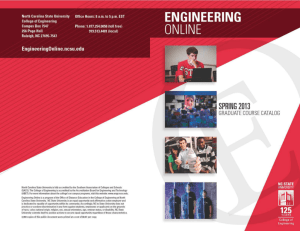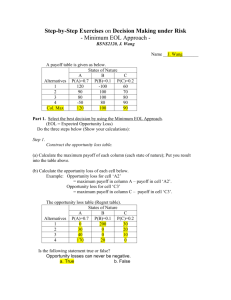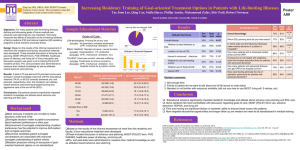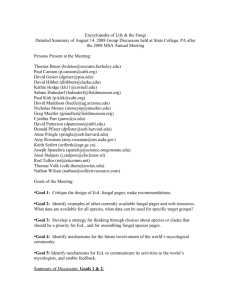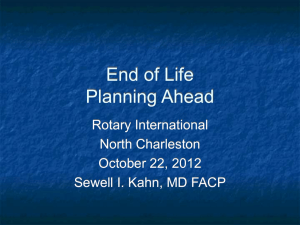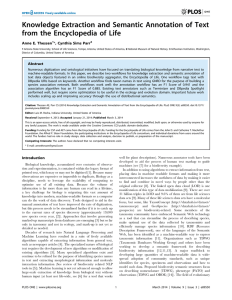February 2014-Cultural Competency Annotated Bibliography
advertisement
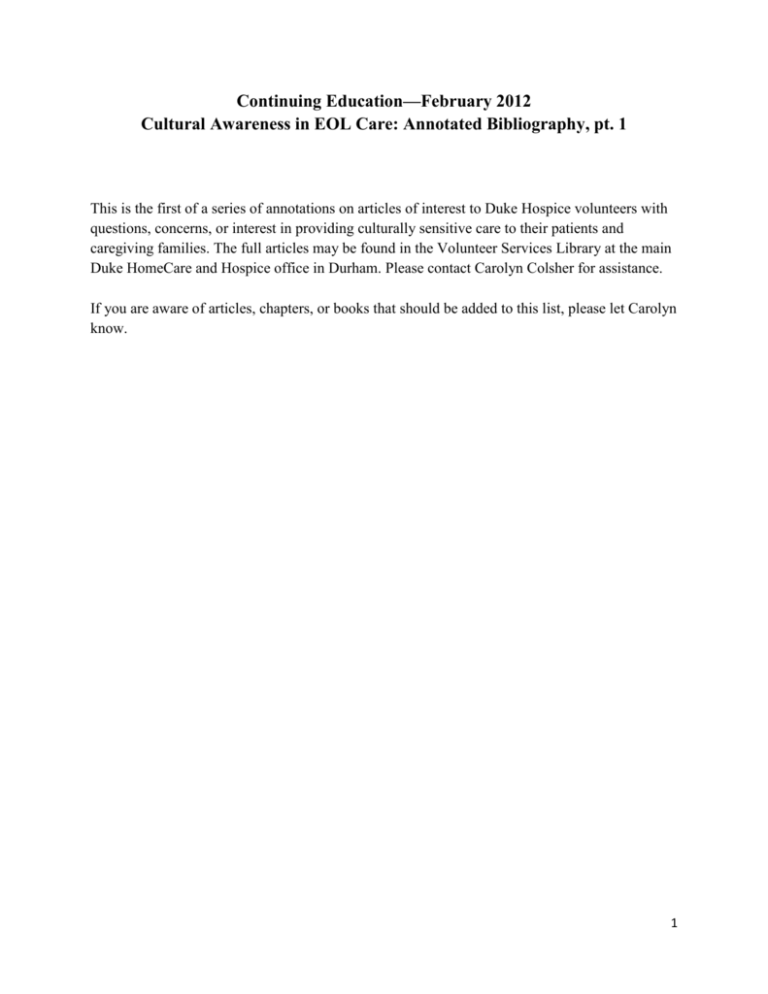
Continuing Education—February 2012 Cultural Awareness in EOL Care: Annotated Bibliography, pt. 1 This is the first of a series of annotations on articles of interest to Duke Hospice volunteers with questions, concerns, or interest in providing culturally sensitive care to their patients and caregiving families. The full articles may be found in the Volunteer Services Library at the main Duke HomeCare and Hospice office in Durham. Please contact Carolyn Colsher for assistance. If you are aware of articles, chapters, or books that should be added to this list, please let Carolyn know. 1 Author Title Citation Target group(s) Crawley, LaVera; Marshall, Patricia; Lo, Bernard; Koenig, Barbara Strategies for Culturally Effective EOL Care 2002, Ann Intern Med, 136: 673-679 Latino American, AA Fiorelli, Robin, and Jenkins, Wanda Cultural Competency in Grief and Loss NHPCO NewsLine General Kagawa-Singer, Marjorie, and Blackhall, Leslie J. Negotiating CrossCultural Issues at the EOL 2001, JAMA, 286(23), 2993-3001 AA, CA Kemp, Charles Cultural Issues in Palliative Care 2005, Seminars in Oncology Nursing, 21(1), 44-52 General Notes Directed toward physicians working with pts at EOL. Uses case studies of (1) Advance Directives in a Spanish-speaking Woman Pt with Congestive Heart Failure and (2) Insistence on Life-Sustaining Interventions by an AA Male Pt with Metastatic Cancer. Headings: Strategies for Cross-cultural EOL Care; Basic Concepts of Culturally Effective Care Guidelines for providing bereavement support to individuals from a different culture than your own: think of yourself as a guest in their world; ask about their customs and traditions; identify the degree of acculturation and assimilation the individual appears to have toward the dominant culture; assess the degree of involvement with both the culture of origin and the host culture; ask leading questions; be present. Studies have shown cultural differences in attitudes toward truth telling, life-prolonging technology, and decision-making styles at the EOL. Using 2 case studies, the authors outline some of the major issues involved in cross-cultural care and indicate how the patient, family, and clinician can navigate among differing cultural beliefs, values, and practices. Practical advice for learning about cultures (through literature, contacts in the community, the pt and family); common issues at EOL and possible interventions (unique differences, experiential issues, language / cultural barriers, resolving relationships, decision-making, family involvement in care, religion and faith, involvement of clergy, life support and advance directives, suffering, expression of pain, meaning of death and dying, immediate after-care, autopsy and organ donation, disposal of the body, 2 Lopez, Sandra Honoring Cultural Diversity at the EOL 2007, Social Work Today, 7(6), 36 General Mazanec, Polly, and Tyler, Mary Kay Cultural Considerations in End-of-Life Care 2003, American Journal of Nursing, 103(3), 50-59 AA, CA, Filipino American, Hispanic/ Latino American Perkins, Henry et al. Cross-cultural Similarities and Differences in Attitudes about Advance Care Planning Approaching the End of Life: Attitudes, Preferences, and Behaviors of AfricanAmerican and White Patients and Their Family Caregivers A Crack Between the Worlds 2002, J Gen Intern Med, 17: 48-57 Mexican-American, Euro-American, AA 2003, J of Clin Oncology, 21(3), 549554 AA, White 1995, Commonweal, 122(18), 13 Mexican Communication 2011, Culture Clue for All Cultures Phipps, Etienne et al. Roy, Ann U of Washington MC grief and bereavement Major Cultural Considerations and EOL Care: pt’s perceptions of health and suffering; pt’s perceptions of death and dying; perceptions of healthcare providers, healthcare, and hospice; accepted healthcare practices and remedies; accepted religious and spiritual beliefs, practices, and rituals; communication patterns and common forms of expression; the role of family, relationships, and family involvement; and problem-solving, decisionmaking and help-seeking behaviors. Directed toward nurses working with pts at EOL. Headings: Developing Cultural Competence (Barriers to cultural competence); Components of Culture: Ethnic Identity; Components of Culture: Age; Components of Culture: Spirituality; Culturally Controversial Issues Majorities of all 3 groups studied believed “the pt deserves a say in treatment” and “advance directives improve the changes a pt’s wishes will be followed,” but disagreed about (among other things) who controls treatments, whether the medical system can be trusted. Directed toward physicians working with pts at EOL. 68 AA and white cancer pts and caregivers interviewed re: EOL preferences. Disagreements between pts and families about the use of lifesustaining measures in pts without Living Wills may result in pts’ preferences being superseded at EOL. Focuses on the Mexican concept of death, Day of the Dead celebrations; link between life and death; contrast with the American concept of death. Directed toward clinicians at UWMC. Headings: Help 3 Valente, Sharon M. AA= CA= Guide: All Cultures Clinicians End of Life and Ethnicity 2004, Journal for Nurses in Staff Development, 20(6), 285-293 General Your Patients Feel Comfortable; Establish a Relationship with Your Patients; Provide Health Information in Ways Your Patients Accept; Maintain Good Communication with Your Patients; Show Your Patients Respect Directed toward nurses working with pts at EOL. Headings: Impact of Culture on EOL Choices; Content of EOL Care; Influence of Culture and Ethnicity on Attitudes toward Death; Ethnicity and Advance Directives; Use of Hospice; Implications and Clinical Challenges; Symptom Management; Nursing Education; Toolkits for EOL Education African American Chinese American 4
